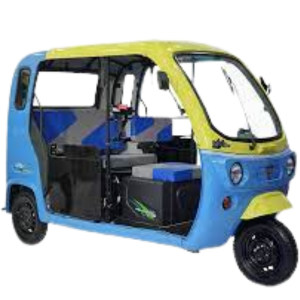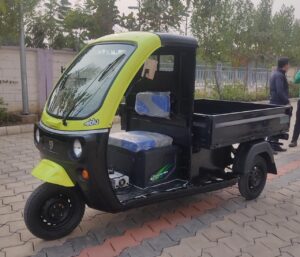First deployed in India in 2011, in the national capital, Delhi in 2014, e-rickshaws have come a long way in the country. Now as we look at the post-pandemic world, and focus on addressing the sustainable commute challenge e-vehicles, e-rickshaws, or ‘battery rickshaws’ as they are often called, are at the forefront. In less than a decade since the e-rickshaws were introduced, their number across India has crossed the 1.5 million mark and is rapidly growing.
The popularity of e-rickshaws has rapidly grown across India due to their ability to carry up to 4 passengers with greater comfort, less human labor, and zero emissions.
Since they don’t consume costly and polluting conventional fuels, e-rickshaws are more economical to operate even when compared to CNG-powered auto rickshaws.

In major cities like Delhi, e-rickshaws have emerged as a source of livelihood for drivers and their families, and a sustainable as well as a low-cost commute for low-income to lower middle-class commuters. The salient features of e-rickshaws are:
The Top 5 Benefits Of Electric Rickshaws Are:
Zero Pollution –
E-rickshaws have proven to be a great last-mile commute solution for Indian roads. At present, CNG-driven autos are considered to be the cleaner local commute solution. However, powered by batteries, e-rickshaws are a zero-pollution option. Even if we were to replace the existing CNG autos with e-rickshaws, it would amount to a reduction of 1,036.6 tonnes of CO2 emissions daily(or 378,357 tonnes of CO2 emissions annually). Not only that, they don’t cause noise pollution, the way autos do.
Cheaper And Better–
E-rickshaws are significantly cheaper than the conventional last mile solutions such as autos which are the second most affordable mass mobility option. An e-rickshaw can be purchased for about INR 1 lakh whereas an ICE-based auto could cost up to 3 lakh depending on the state where it is purchased.
Low Maintenance–
Powered by batteries that can be charged at a charging station or swapped at a battery swapping station, e-rickshaws are easier to operate and maintain than conventional autorickshaws.
Smoother Ride–
E-rickshaws are lower than the conventional pedal rickshaw and with their gravity being closer to the ground, they prove to have a smoother turning and ride experience. It makes them ideal for crowded and heavy traffic urban roads as well as bumpy and narrow rural roads.
Greater Earning Potential –
E-rickshaws not only contribute to the cause of sustainability but also the socio-economic growth of e-rickshaw drivers and their families. With the low cost of operations, e-rickshaw drivers can earn more than a normal rickshaw puller and with greater comfort. Now with the rise of battery swapping services, e-rickshaw drivers are also able to overcome range anxiety as they can swap discharged batteries at a swapping station and get back to the road within a few minutes.
The Future Of Electric Rickshaws In India
In the initial days, e-rickshaws were being imported, but now they are being manufactured domestically. Several OEMs are producing highly advanced Lithium-ion batteries and the ecosystem is growing rapidly.
The biggest challenge that e-rickshaws faced in the early years was range anxiety and a lack of adequate charging infrastructure. However, with the rapid expansion of battery swapping networks, it is now becoming increasingly possible for e-rickshaw drivers to drive into the nearest swapping station, get the depleted battery replaced with a fully charged one, and get back on road within minutes.
The Government of India has also set the wheels in motion for announcing a National Battery Swapping Policy which will further accelerate the adoption of EVs (the majority of which are e-rickshaws) across the country. Thus, the future of e-rickshaws in India is quite bright!
Related : eblu-Reino – E Loader Electric goods Cargo Autorickshaw Palakkad

